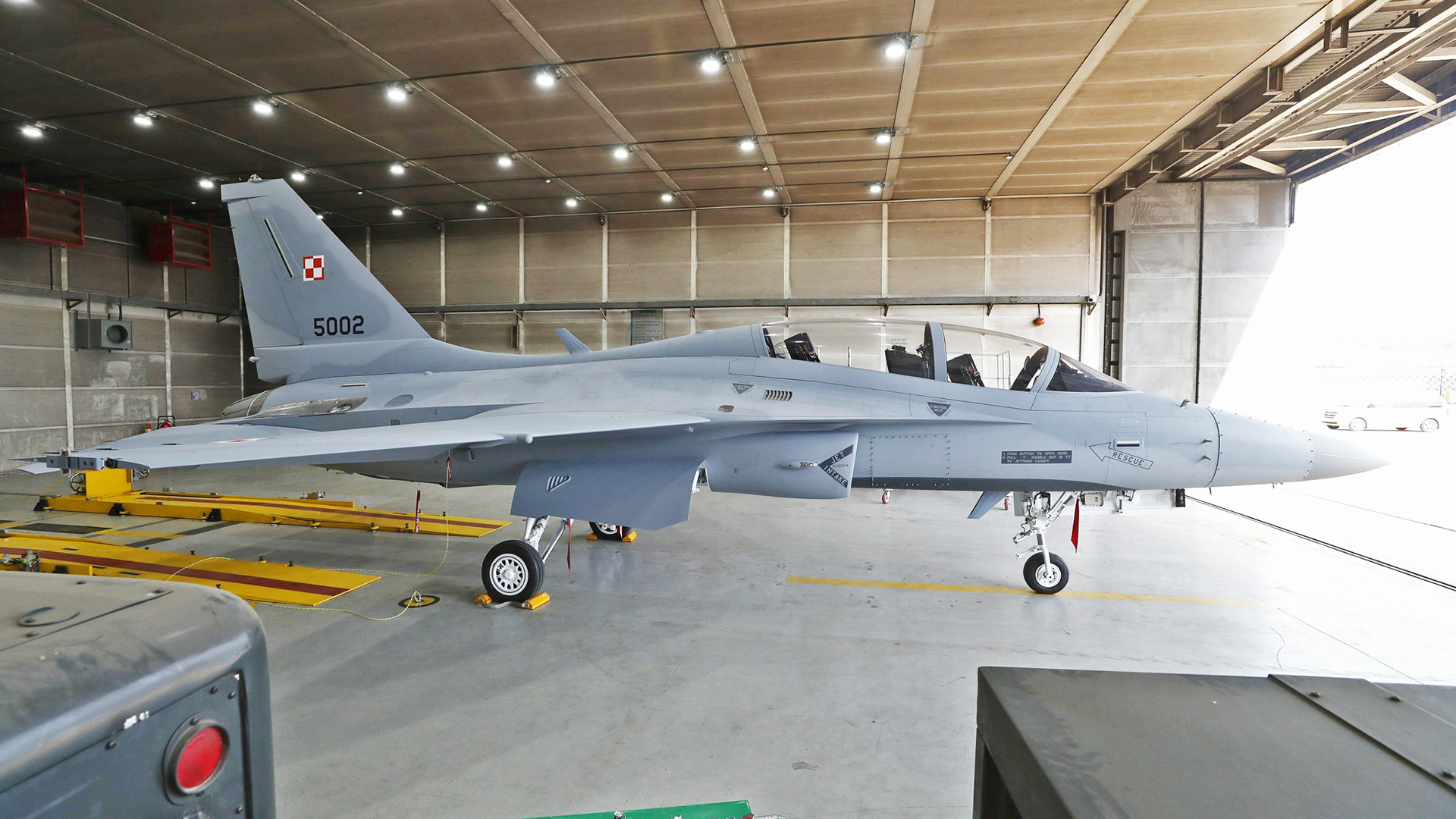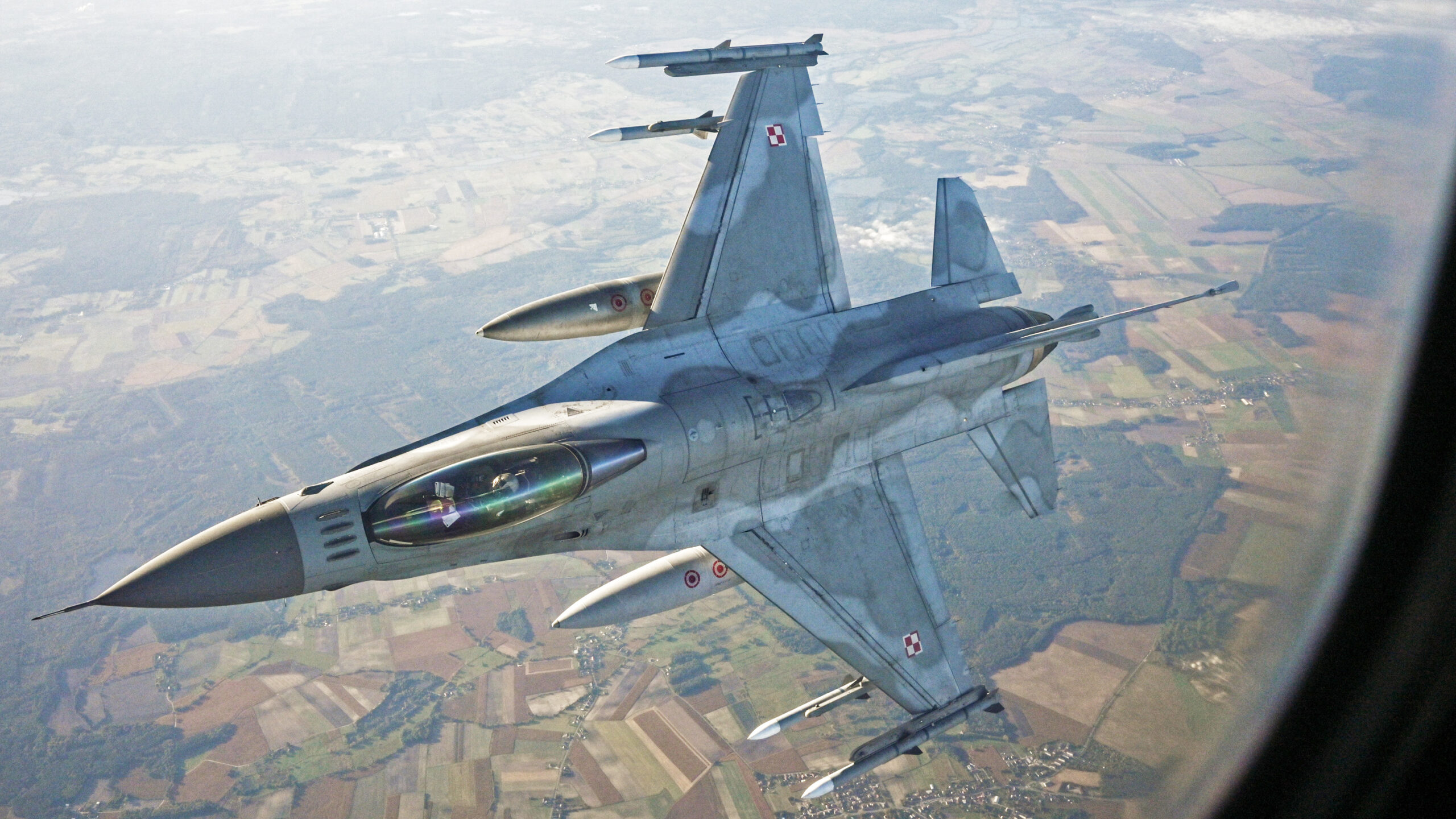Ukrainian pilots will train to fly F-16 fighter jets in Poland, according to the Polish defense minister. While there had been prior suggestions that Poland would be involved, on some level, in the effort to get Ukrainians into the cockpits of F-16s, this is the first official confirmation that it’s actually going to happen, although details remain scarce, for now.
“We are ready, the Polish side is ready to train pilots on F-16 aircraft,” Poland’s defense minister, Mariusz Błaszczak, told journalists at a meeting of EU defense ministers in Brussels today.
The statement from Błaszczak followed a suggestion from a senior European Union official that such training had, in fact, already begun.
“I am happy that finally, the training of the pilots for the F-16 has started in several countries,” the European Union’s (EU) foreign policy chief Josep Borrell said, at the same Brussels meeting today. “It will take time, but the sooner the better,” he added.
When asked where this training effort had begun, Borrell replied: “For example, in Poland.”
The EU foreign policy chief only mentioned Poland by name, but his reference to training having started in “several countries” is noteworthy. Whether the training has begun or not — and the Polish defense minister states otherwise — it indicates that previous proposals for a multinational ‘training coalition’ to prepare Ukrainian pilots to fly the F-16 have not only taken shape but are now in active operation.
Whenever it will occur, we still don’t yet know the exact extent of training that will be provided. The process of preparing a Ukrainian pilot to fly an F-16 in combat is a potentially long one, as we have discussed before, and it could also encompass anything between basic training for a student, in a propeller-driven type, all the way up to weapons and tactics training for an already-winged pilot in an actual F-16. There are also various simulator and ground training efforts that would also be valuable for pilots destined to fly the F-16.
The timing of Błaszczak’s and Borrell’s words is telling, however.
It was only last week that U.S. President Joe Biden reversed his stance on the transfer of F-16s to Ukraine, saying he would now support such an effort and that “The United States together with our allies and partners are going to begin training Ukrainian pilots on fourth-generation fighter aircraft, including F-16s.”
Also speaking in Brussels today was the Dutch Defence Minister Kajsa Ollongren, who said that the training effort would be the “first step” toward the eventual supply of Western aircraft to Kyiv.
“We will continue discussing with our allies and with countries that might have F-16s available about that next step, but that’s not on the table right now,” Ollongren said. “That is in the next phase.”
Poland, in the past, was briefly linked with supplying Ukraine with F-16s. Reports from Ukraine raised the possibility of a transfer of Vipers from Poland back in January, although Polish officials quickly moved to reject that idea.
In the following tweet, Pawel Krutul, the vice-chairman of the Polish National Defense Committee, points out that transferring F-16s rather than MiG-29s would have a degrading effect on the Polish Armed Forces. Wojciech Skurkiewicz, Secretary of State in the Polish Ministry of National Defense, responds in agreement, stating: “There is no question of handing over Polish F-16s.”
As we have previously examined, Poland’s F-16s are among the newest and most capable in Europe. There are no plans to replace them any time soon and their importance — which includes detachments to provide air policing for the three Baltic States — has only grown since Poland donated a portion of its Soviet-era MiG-29 Fulcrum fighter jets to Kyiv.

It therefore makes sense that Poland is, instead, providing training to Ukrainian pilots, although, once again, we don’t know if this actually involves flying F-16s.
Ukraine’s President Volodymyr Zelensky has also previously raised the likelihood of Poland being involved in a multinational training effort, intended to prepare the Ukrainian Air Force for F-16s.
On his return from his trip to different Western European nations earlier this month, President Zelensky outlined what he described as “a coalition to train pilots on modern Western aircraft.” Zelensky said that Poland and the United Kingdom had agreed to this proposal and that he expected France to follow suit. Since then, Belgium, too has put itself forward as a potential training provider.
If Poland is making use of its Viper for training Ukrainian pilots, it has at its disposal a fleet of 36 single-seat F-16C Block 52+ jets and another 12 two-seat F-16D Block 52+ jets. These are operated from two bases: Poznań Krzesiny and Łask. As mentioned before, these are more capable than any F-16s Ukraine is likely to receive soon, although that’s hardly a problem when it comes to conversion training, which can be tailored to Ukrainian requirements.

Aside from the F-16s, the Polish Air Force operates a well-established training setup for fighter pilots, transport pilots, and rotary-wing pilots alike.
Poland operated the homegrown and recently modernized PZL-130 Orlik TC-II turboprop trainer for the initial stages of training. Prospective fighter pilots then progress to the Leonardo M-346 Master advanced jet trainer, to complete their course, known as lead-in fighter training (LIFT), before conversion to a frontline type. Sixteen M-346s are in use together with simulators and other training aids.

As The War Zone has explored in the past, the M-346 comes with everything needed to prepare a pilot for a fourth-generation (or even a fifth-generation) fighter, with a head-up display and multifunction displays in the cockpit, hands-on throttle and stick (HOTAS) controls, and in-flight safety features including a pilot-activated attitude recovery system. The jet is intended to be operated as part of a wider Ground-Based Training System (GBTS) that employs live, virtual, and constructive (LVC) elements to emulate sensors, weapons, and enemy forces.

Beyond the M-346, Poland is also looking forward to receiving 48 Korea Aerospace Industries (KAI) FA-50PL light combat jets, which you can read more about here. While these aircraft are primarily being acquired to fulfill frontline roles, including replacing the Su-22 Fitter ground-attack jets, they offer an impressive training capability.
The first 12 Polish FA-50PL aircraft, in an interim standard, are scheduled to be delivered this summer, with the next batch of 36 aircraft, in Block 20 configuration, to arrive beginning in 2025. The Block 20 jets will feature active electronically scanned array (AESA) radar, Sniper targeting pod, and Link 16 datalink, among other changes.
What’s more, the design of the FA-50 is heavily inspired by the F-16, with its design and pilot interfaces heavily influenced by the Viper, with Lockheed Martin working directly with KAI on its development. Once the FA-50 is available, it would appear to make an ideal LIFT platform to prepare pilots for the F-16.

KAI
We know that at least one country that is poised to start training Ukrainian pilots for the F-16 doesn’t actually operate any of those aircraft itself. That’s the United Kingdom which has confirmed it’s going to provide training that’s specifically geared toward helping Ukrainian aviators convert to the F-16. Details of any specifics remain scarce, however.
Today, Germany, another non-F-16 operator, said that it, too, was looking at how it could become involved in the coalition training effort, but again warned that it had only “extremely limited” possibilities to contribute. German Defense Minister Boris Pistorius said Berlin’s involvement “is not relevant because we simply do not have F-16 aircraft and could not help with pilot training.” That statement seems very much at odds with the United Kingdom’s stated approach, and it may also be the case that the Polish training effort also won’t involve F-16s.

Whatever the type of training that will be provided by Poland and the other “several countries” mentioned by Borrell, it seems clear that the training coalition is a reality. Undoubtedly, we will eventually learn more about the scope of this training and the type of students that will be involved.
That Poland is taking an apparent leading role here is not altogether surprising. The country has been very active in its support for Ukraine to date, including offering its territory as a major trans-shipment point. At the same time, its proximity to Ukraine and the fact that many of its own pilots have converted from Soviet-era jets to the F-16 will likely be important factors.
In the meantime, however, Ukraine and its allies will be pushing forward with plans for a possible “coalition of jets,” to ensure that the Ukrainian Air Force will have the equipment that its newly qualified F-16 pilots will need to make their training worthwhile.
Contact the author: thomas@thedrive.com
